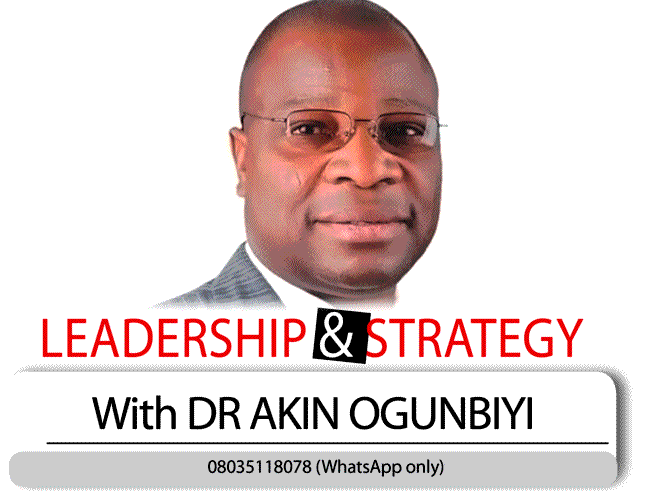In this article, we shall be looking at business success from two perspectives, namely: (a) impact of performance measures or metrics and (b) impact of robust value to customers.
Thirty-one years ago, Harvard Business Review published that landmark discovery on how tracking implementation through metrics can effectively drive business performance. It is called the Balanced Scorecard.
Robert Kaplan and David Norton described the Balanced Scorecard as the comprehensive framework that translates the company’s strategic objectives into a coherent set of performance measures.
The Balanced Scorecard monitors and communicates progress, links every employee’s day-to-day work to the strategy and through this, increases financial health, customer satisfaction, efficiency, knowledge and innovation. It is balanced “because financial and non-financial activities are treated as being equally important”.
This strategic framework delivers focus by tracking business activities through series of linear steps. The Balanced Scorecard’s dashboard provides detailed metrics on day-to-day implementation of performance perspectives. Four categories of essentials or quadrants form the Balanced Scorecard framework. The quadrants can be increased to align with increasing strategic aspirations of organisations but the four basic ones are (a) Financial (cost, profit and revenue), Customer (lower wait time and better retention), Internal process (process efficiency, faster output), learning and growth (improve skills, improve tools).
Although the Balanced Scorecard has proved to be valuable, useful and effective in motivating the business to go behind implementation and track it through measurements, KPIs and performance structures, perspectives-monitoring has proved to be “too rigid, limiting and puts too much attention on the categorization process”. A successful business is surely more than balancing linear steps of the organisation’s strategic plans.
Aswath Damodaran, Professor of Finance at Yale University, said that from research, measures or metrics will not suffice in guaranteeing successful implementation in view of the uncertainty and complexities of the present day marketplace. Measures and models, according to Professor Aswath, have stories and narratives behind them which must be factored into our analysis and decision-making processes.
The marketplace is now fast-paced and, uncertain. Trends can only be predictive in nature, statistics also, can only be descriptive, and integrity of data must be painstakingly checked, verified and validated. Also, quantifying risks can only be done with probabilities and useful insights.
An Asian business strategy expert, Ajarim Olli, pointed out that honest conversation about business successes cannot be achieved without the analysis of value to customers.
He explained this with the Harvard Business School “Value Stick” which captures value by analyzing the “company’s willingness to sell and the customer’s willingness to pay”.
According to Harvard’s “Value stick”, it is the “willingness to pay” or WTP, that captures the customers’ delight and therefore the company’s products or services’ performance characteristics and attributes. Ajarim explained that it is the maximum price that the customer is willing to pay that creditably “signposts value”.
Some key factors that create the value can be grouped into two: the tangible and intangible resources.
Tangible resources are the organisation’s borrowing capacity, other processes for generating funds and organizational resources such as the company’s reporting structure, systems and other processes. They also include the other “physical” ones as well as the technological resources.
Intangible resources are human resources (not the person that is part of the structure) such as; knowledge, trust (including internal and clients’ connections), leadership and organisational capabilities.
Innovative resources are also part of the intangibles. They include ideas, scientific or creative capabilities, capacity to adequately satisfy identifiable needs of customers with new products or services as well as beneficial support.
We also have the “reputational” resources which include company’s internal synergy and efforts high-performance-delivering teams, brand name and beneficial value propositions, authenticity and delivery of products or services quality, durability; reputation with stakeholders, interactions and other relationships across the value chain.
Simon Sinek, popular American strategist and motivational speaker, in his contribution to what should be the go-for strategy in business success, said that value by way of constant and revved-up momentum with accomplishment should be the priority, not just profit and revenue. He noted that “when financial goals are used to measure business success, we directly incentivize bad behaviour, and it is only good behaviour that delivers things of value for the long game”. He added that “good behaviour builds momentum and makes an organisation co-sustain itself while toxicity destroys organizations”.
Momentum is achieved when an employee is accountable and also takes ownership of his work area by being committed, engaged and ready to make the big difference. It is the sincere, specific and positive reinforcement and influence that spreads good behaviour, improves attitude, inspires and repairs relationships. The employee creates the environment for everybody to succeed.
Making progress through value guarantees sustainability. Experts say it is the CEO mentality as well as the essential strategy for long-term sustainability and survival. It gives business “a life of its own” and enables it to grow more value. It sharpens focus on systems and procedures. Employees become colleagues and strategic partners. They genuinely spread the culture of the “supporting cast”. The organisation also “reinvents” itself in its people.
Maximizing value, not just profitability but profitable growth, reduces costs, revs-up sales activities in existing markets and grows new markets.
Delivering robust value to the customers and other stakeholders is a key attribute of the successful business. The successful organisation is unique and inimitable to competition.
READ ALSO: Professor Kingsley Moghalu and the Value of Determination









